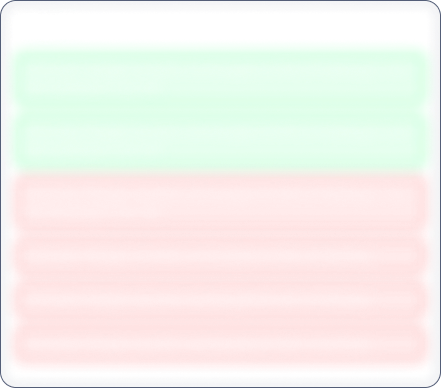Year End Sale 50% off
JFL Life Sciences

No Data Available
Investor Sentiment
JFL Life Sciences Share price and Fundamental Analysis
Key Metrics
Stock Returns
Stock Heatmap

No Stocks
Smart Score

Unlock Smart Score
See Detailed Analysis & Insights


Unlock Insights
See Detailed Analysis & Insights
Technicals
Returns Calculator
If you would have investedResearch Report
No Research Report
Corporate Action
Financials
Key Ratios
ROE
Avg ROE (3 Yrs) : NaN%
ROCE
Avg ROCE (3 Yrs) : NaN%
ROA
Avg ROA (3 Yrs) : NaN%
NPM
Avg NPM (3 Yrs) : NaN%
Dividend History
5 Year FactSheet
Documents

No Data Available
News
JFL Life Sciences Management and History
Company Management


Unlock Management Data
See Detailed Analysis & Insights
Company History
JFL Life Sciences Ltd. was incorporated as JFL Life Sciences Private Limited' on April 25, 2010 as a Private Limited Company under Companies Act, 1956. Pursuant to a Special Resolution held on February 10, 2022, Company converted from a Private Limited to Public Limited Company and name of the Company was changed to JFL Life Sciences Limited', on March 3, 2022. The Company primarily manufactures and market pharmaceutical products. Its product portfolio consists of Dry powder injections, Tablets & Capsules (B-Lactam) solid oral dosage form, Tablet and Capsules (general) and Oral Rehydration Solutions (ORS).
The Company is engaged in domestic as well as international business. With market presence in PAN India, products of JFL is supplied to 10 developed and developing countries throughout the World. To maintain its competitiveness and to further the cause of health care, it has laid a strong R&D foundation and a FDA approved manufacturing facility near Ahmedabad. It also export products to African countries, Middle Eastern countries and CIS countries, mainly through merchant exporters.
For the purpose of identification equipment / machinery / containers are appropriately labelled to identify the stage of process. In case of tablets, the materials are quarantined after granulation, compression, coating and final packing operations for clearance from Q.A. before pursuing the next stage of process. In case of capsule, the materials are quarantined after mixing, filling and final packing operation for clearance from Q.A. before pursuing the next stage of process. Containers are labelled as UNDER TEST' with details such as name, code number, quantity, no of containers, manufacturer's name, material code no, and material is then quarantined. A Parenteral Drug (LVP, SVP) is defined as one intended for injection through the skin or other external boundary tissue, rather than through the alimentary canal, so that active substances they contain are administered, using gravity or force, directly into a blood vessel, organ, tissue, or lesion.
JFL Life Sciences Share Price
JFL Life Sciences share price reflects investor sentiment toward the company and is impacted by various factors such as financial performance, market trends, and economic conditions. Share price is an indicator which shows the current value of the company's shares at which buyers or sellers can transact.
JFL Life Sciences Market Cap
Market capitalization of JFL Life Sciences indicates the total value of its outstanding shares. Marketcap is calculated by multiplying share price and outstanding shares of the company. It is a helpful metric for assessing the company's size and market Valuation. It also helps investors understand how JFL Life Sciences is valued compared to its competitors.
JFL Life Sciences PE Ratio
JFL Life Sciences PE ratio helps investors understand what is the market value of each stock compared to JFL Life Sciences 's earnings. A PE ratio higher than the average industry PE could indicate an overvaluation of the stock, whereas a lower PE compared to the average industry PE could indicate an undervaluation.
JFL Life Sciences PEG Ratio
The PEG ratio of JFL Life Sciences evaluates its PE ratio in relation to its growth rate. A PEG ratio of 1 indicates a fair value, a PEG ratio of less than 1 indicates undervaluation, and a PEG ratio of more than 1 indicates overvaluation.
JFL Life Sciences ROE (Return on Equity)
Return on Equity (ROE) measures how effectively JFL Life Sciences generates profit from shareholders' equity. A higher ROE of more than 20% indicates better financial performance in terms of profitability.
JFL Life Sciences ROCE (Return on Capital Employed)
Return on Capital Employed (ROCE) evaluates the profitability of JFL Life Sciences in relation to its capital employed. In simple terms, ROCE provides insight to investors as to how well the company is utilizing the capital deployed. A high ROCE of more than 20% shows that the business is making profitable use of its capital.
JFL Life Sciences Total Debt
Total debt of JFL Life Sciences shows how much the company owes to either banks or individual creditors. In simple terms, this is the amount the company has to repay. Total debt can be a very useful metric to show the financial health of the company. Total debt more than equity is considered to be a bad sign.
JFL Life Sciences Debt to Equity Ratio
The Debt-to-Equity (DE) ratio of JFL Life Sciences compares its total debt to shareholders' equity. A higher Debt to Equity ratio could indicate higher financial risk, while a lower ratio suggests that the company is managing its debt efficiently.
JFL Life Sciences CAGR (Compound Annual Growth Rate)
CAGR shows the consistent growth rate of JFL Life Sciences over a specific period, whether it is over a month, a year, or 10 years. It is a key metric to evaluate the company’s long-term growth potential. Main metrics for which CAGR is calculated are net sales, net profit, operating profit, and stock returns.
JFL Life Sciences Technical Analysis
Technical analysis of JFL Life Sciences helps investors get an insight into when they can enter or exit the stock. Key components of JFL Life Sciences Technical Analysis include:
Support Levels (S1, S2, S3)
There are usually multiple support levels, but the main support levels for a stock are S1, S2, S3. Support levels indicate price points where stock might get support from buyers, helping the stock stop falling and rise.
Resistance Levels (R1, R2, R3)
There are usually multiple resistance levels, but the main resistance levels for a stock are R1, R2, R3. Resistance levels represent price points where JFL Life Sciences shares often struggle to rise above due to selling pressure.
JFL Life Sciences Dividends
Dividends refer to the portion of the company’s profits distributed to its shareholders. Dividends are typically paid out in cash and reflect JFL Life Sciences ’s financial health and profitability.
JFL Life Sciences Bonus Shares
Bonus shares are usually given by companies to make the stock more affordable, increase liquidity, boost investor confidence, and more.
JFL Life Sciences Stock Split
Stock split increases the number of its outstanding shares by dividing each existing share into multiple shares. When the company offers a stock split, the face value of the stock reduces in the same proportion as the split ratio.
JFL Life Sciences Financials
The financials of JFL Life Sciences provide a complete view to investors about its net sales, net profit, operating profits, expenses, and overall financial health. Investors can analyze financial data to assess the company’s stability and also understand how the company has been growing financially.
JFL Life Sciences Profit and Loss Statements
The profit and loss statement of JFL Life Sciences highlights its net sales, net profit, total expenditure, and operating profits in the current financial year. This Profit and Loss statement is crucial for evaluating the profitability and financial stability of JFL Life Sciences .
JFL Life Sciences Balance Sheet
The balance sheet presents a snapshot of JFL Life Sciences ’s assets, liabilities, and equity of shareholders, providing insights into the financials of the company.
JFL Life Sciences Cashflow Statements
Cashflow statements track the company's cash inflows and outflows over a period. It is an essential tool for understanding how well the company manages its liquidity and finances.


